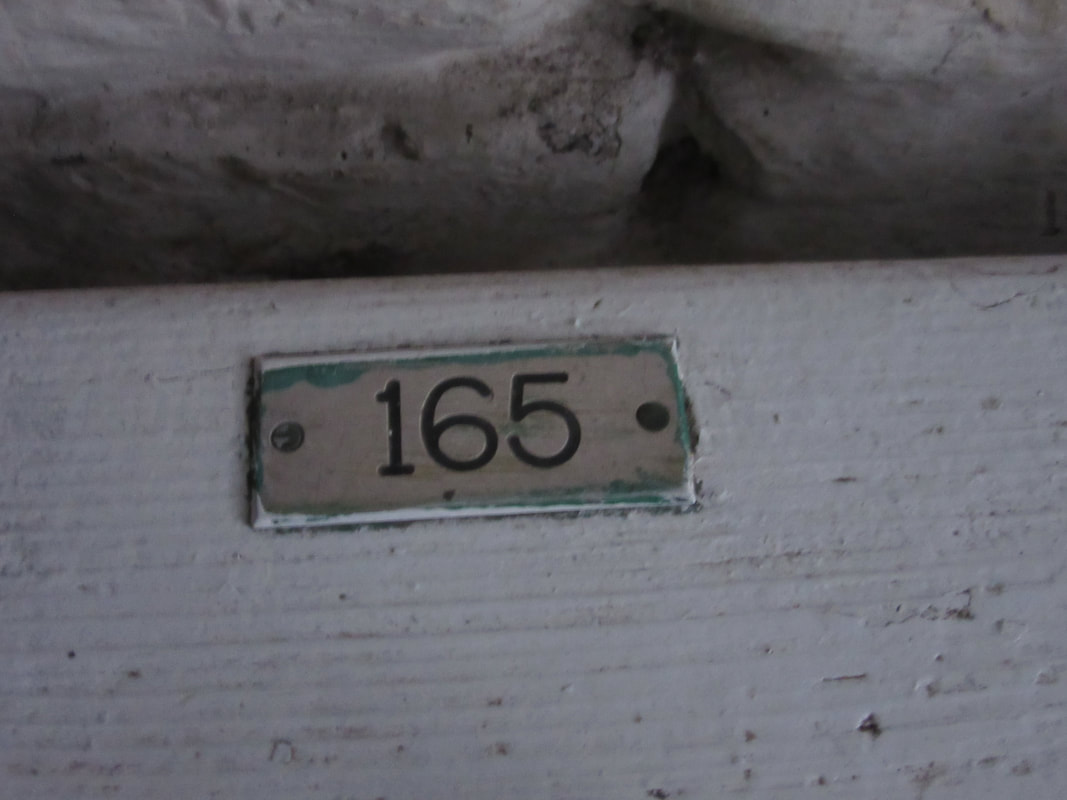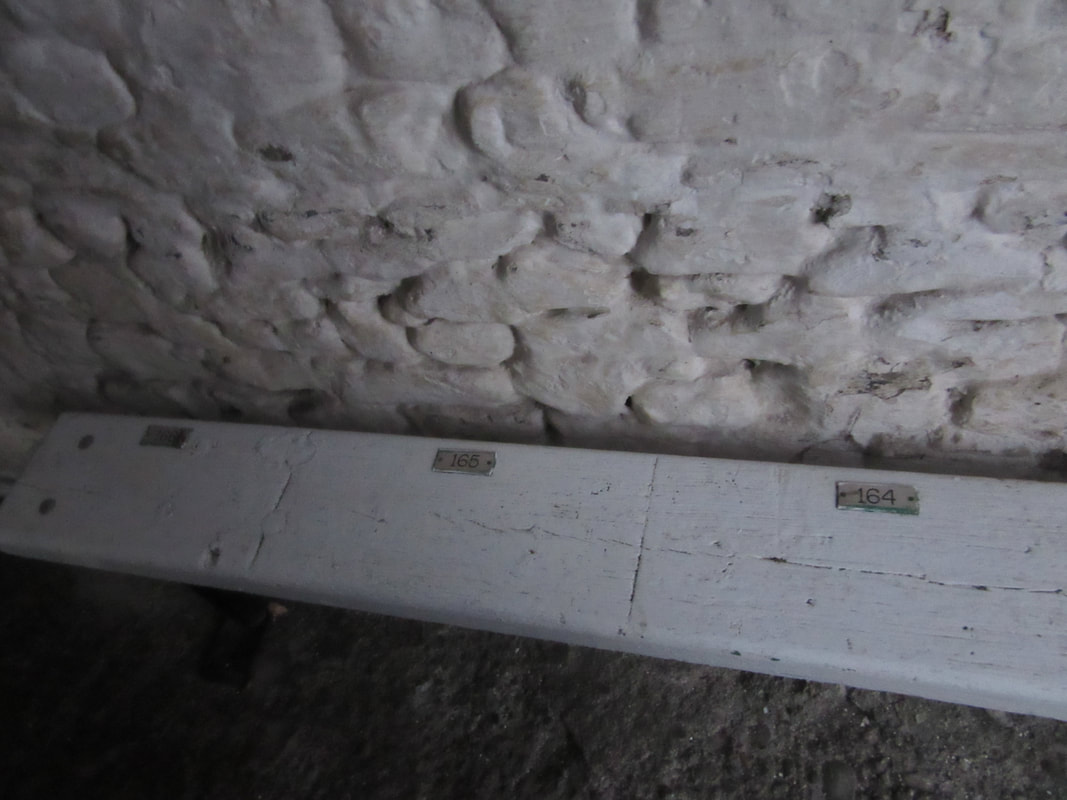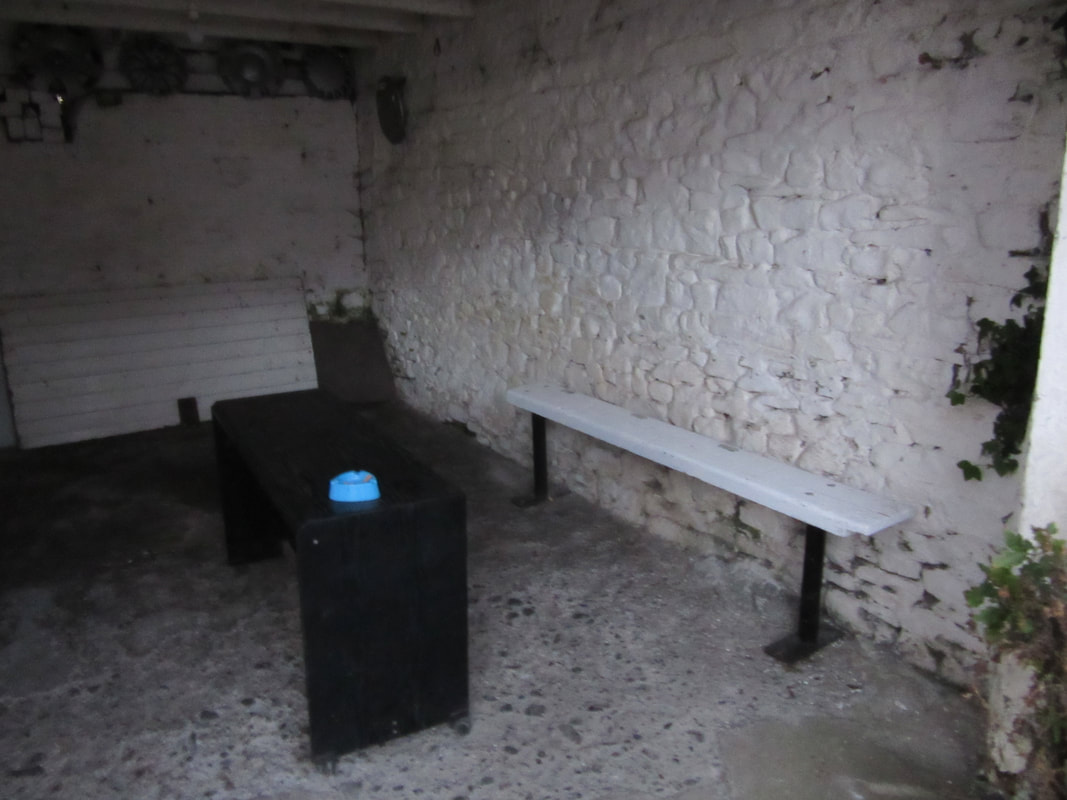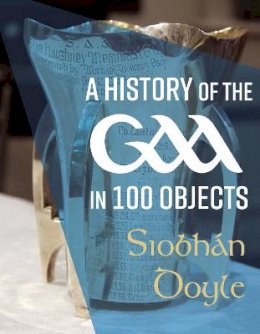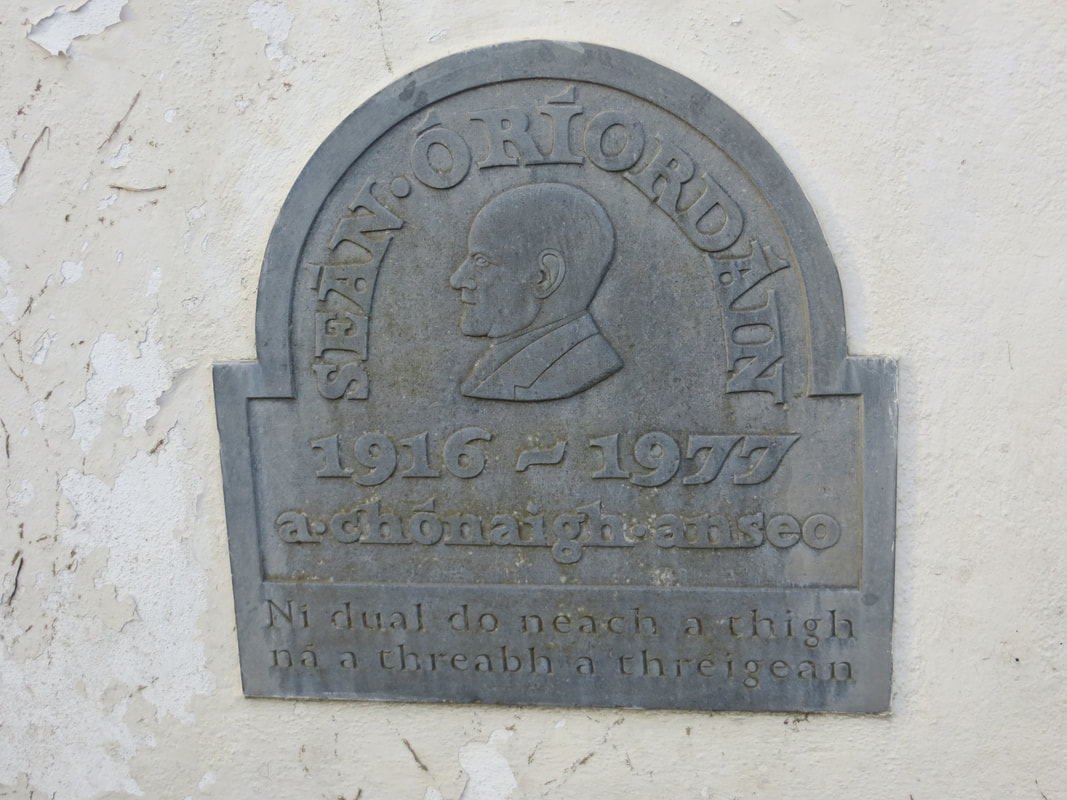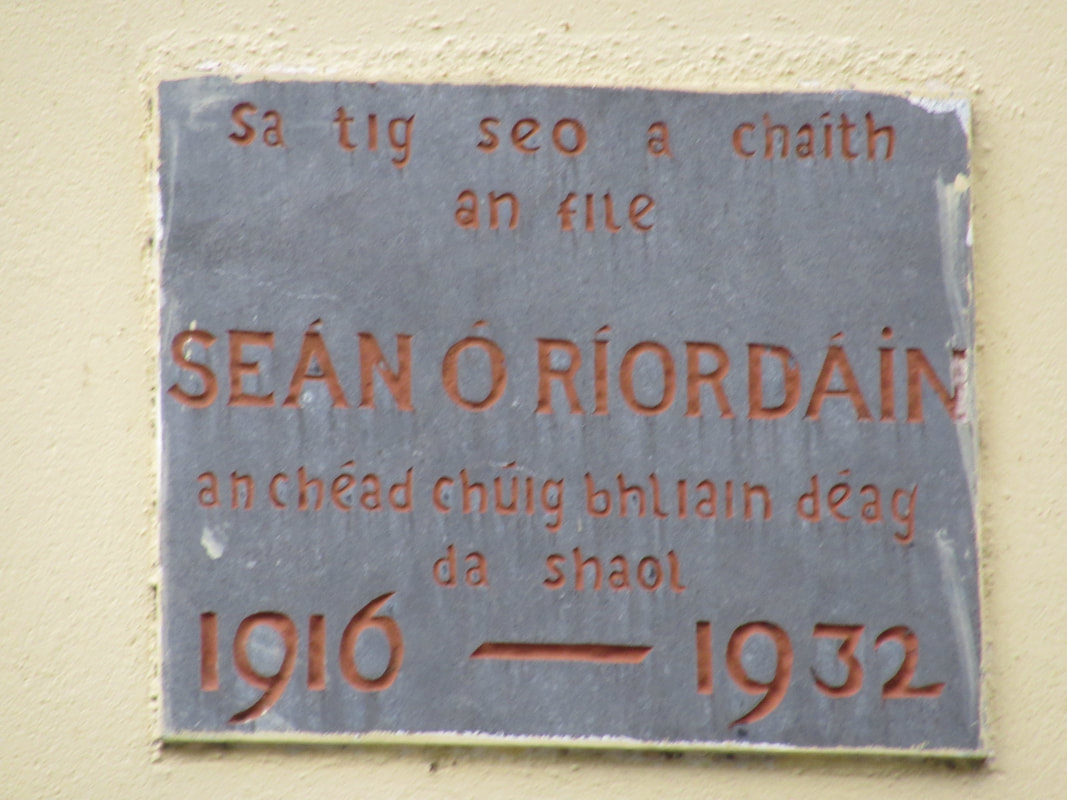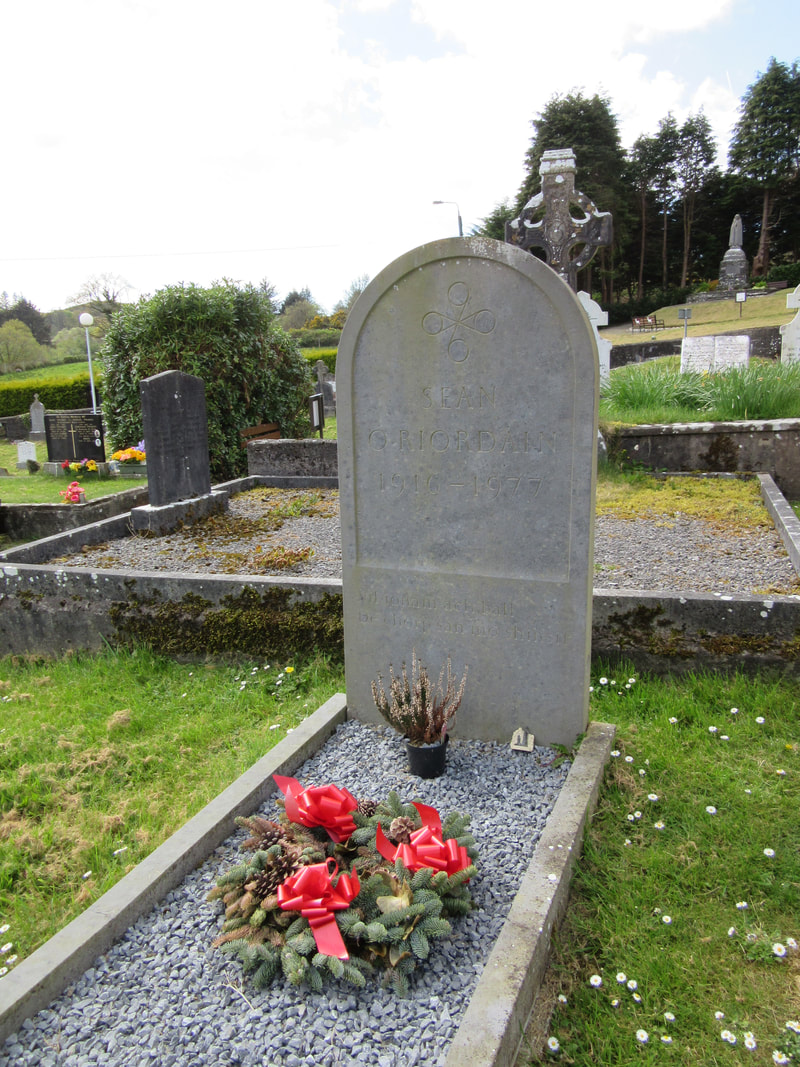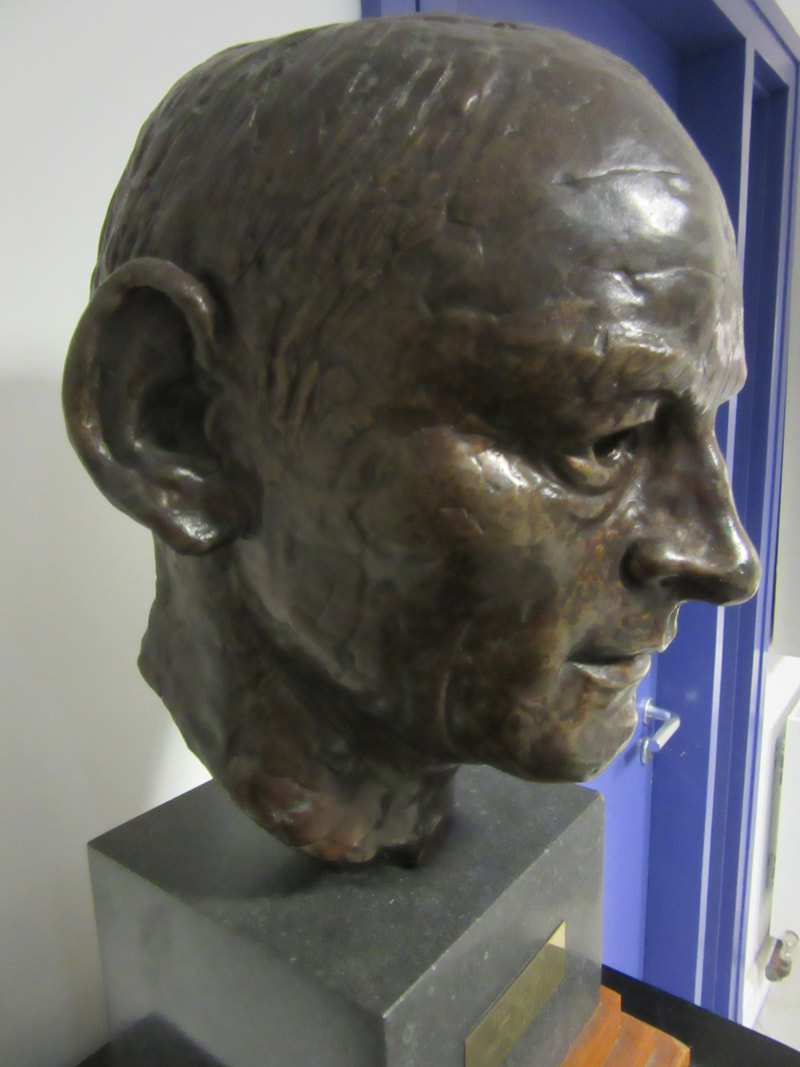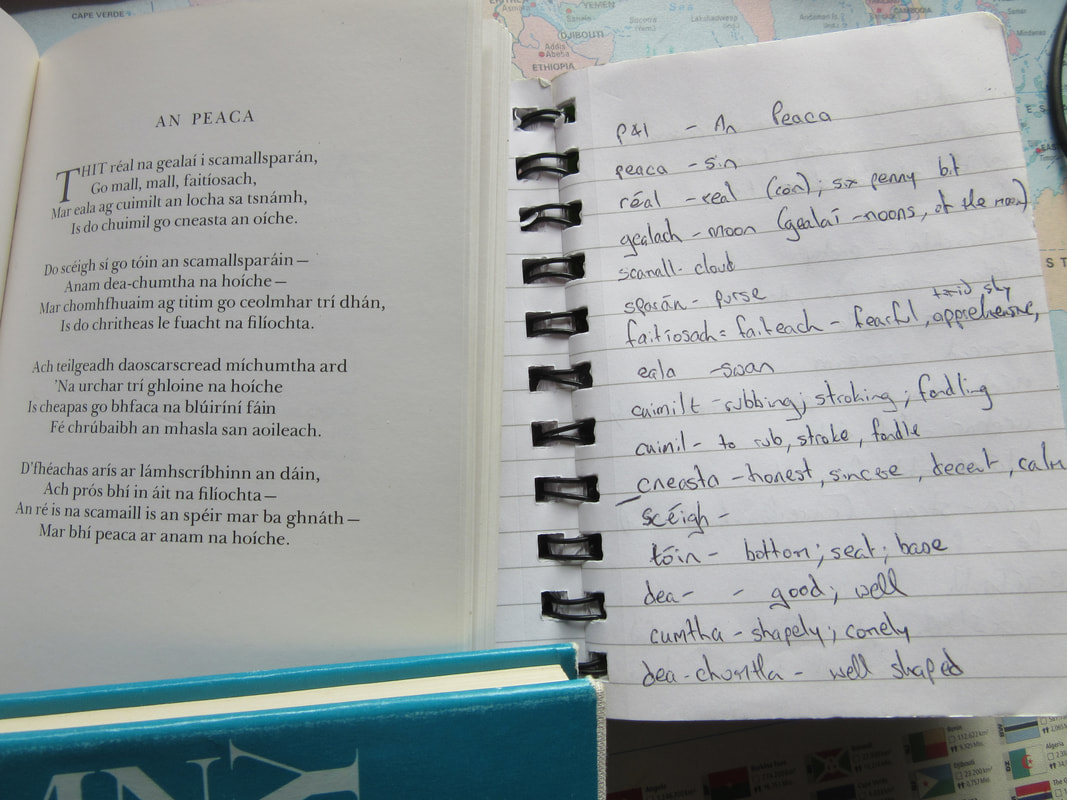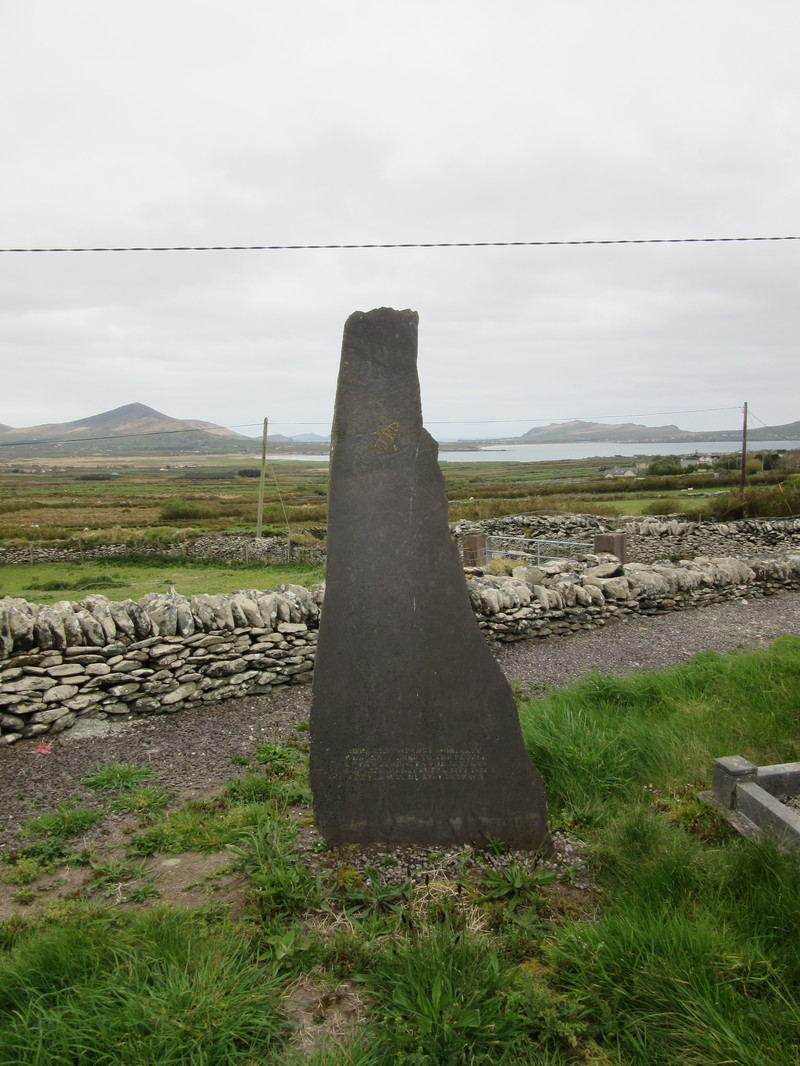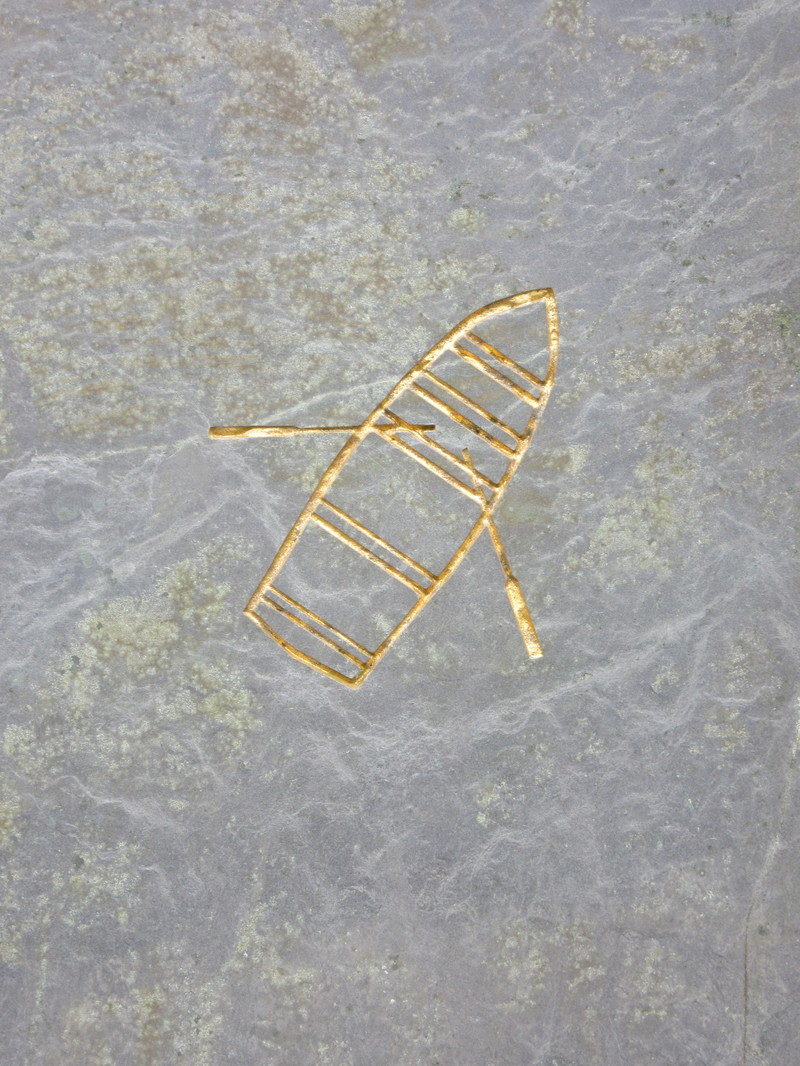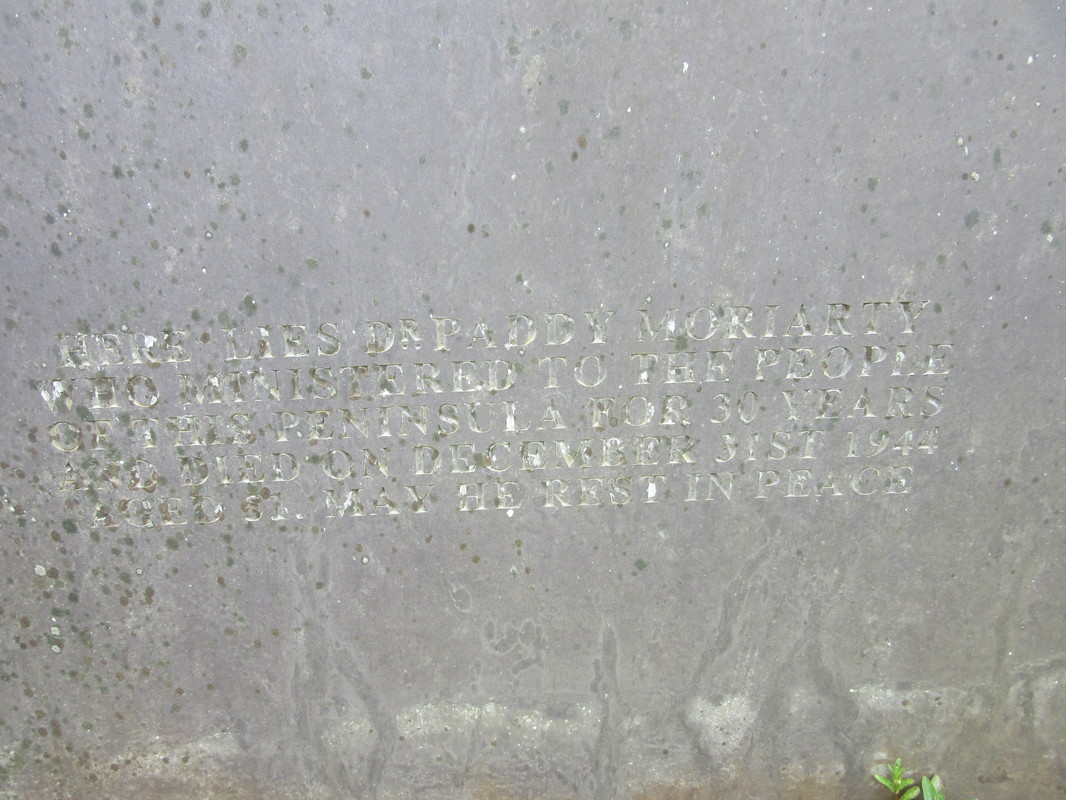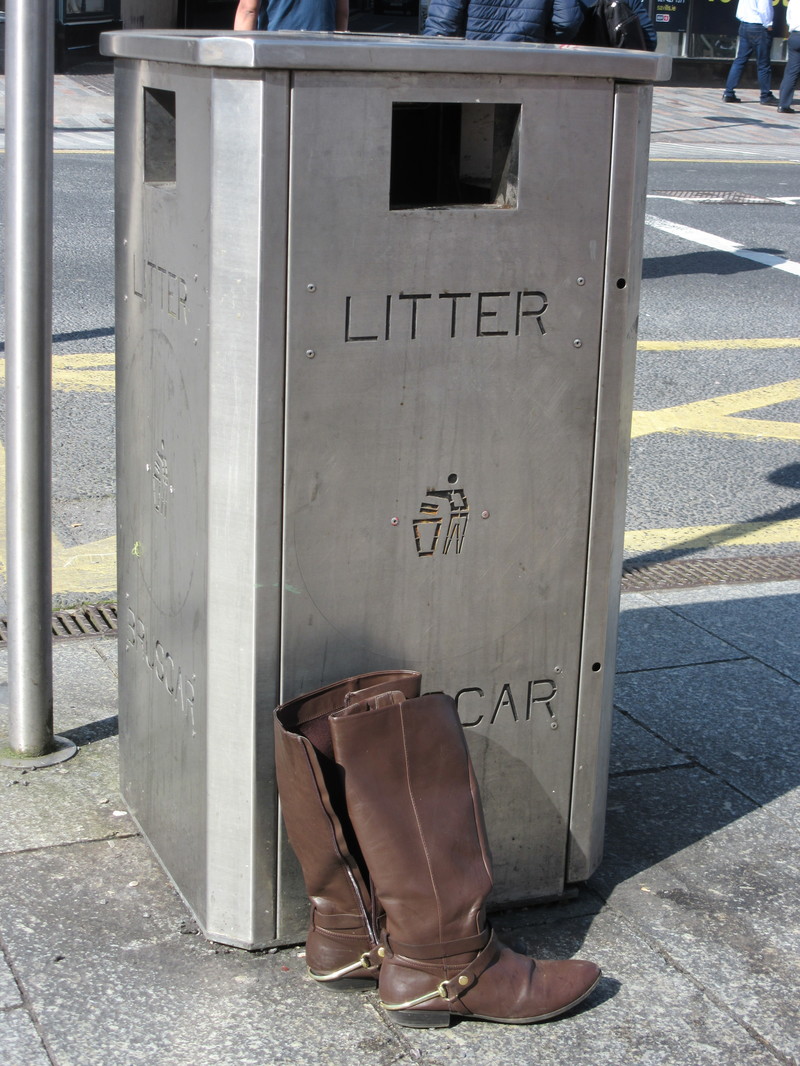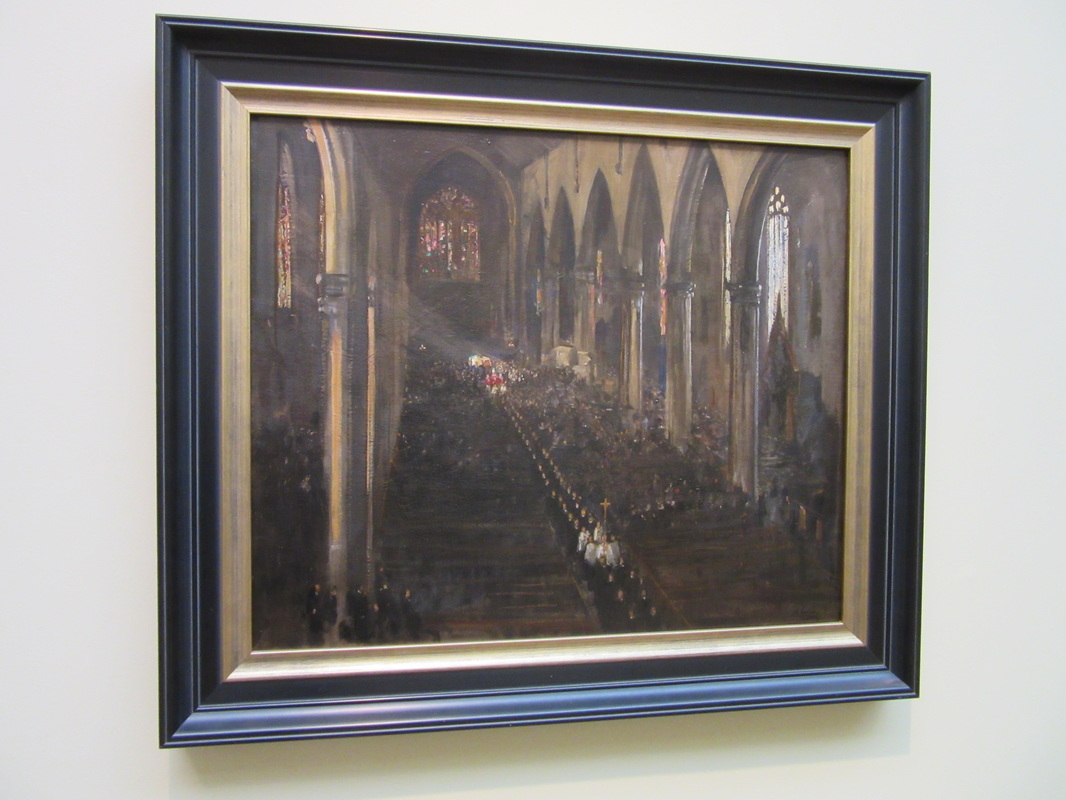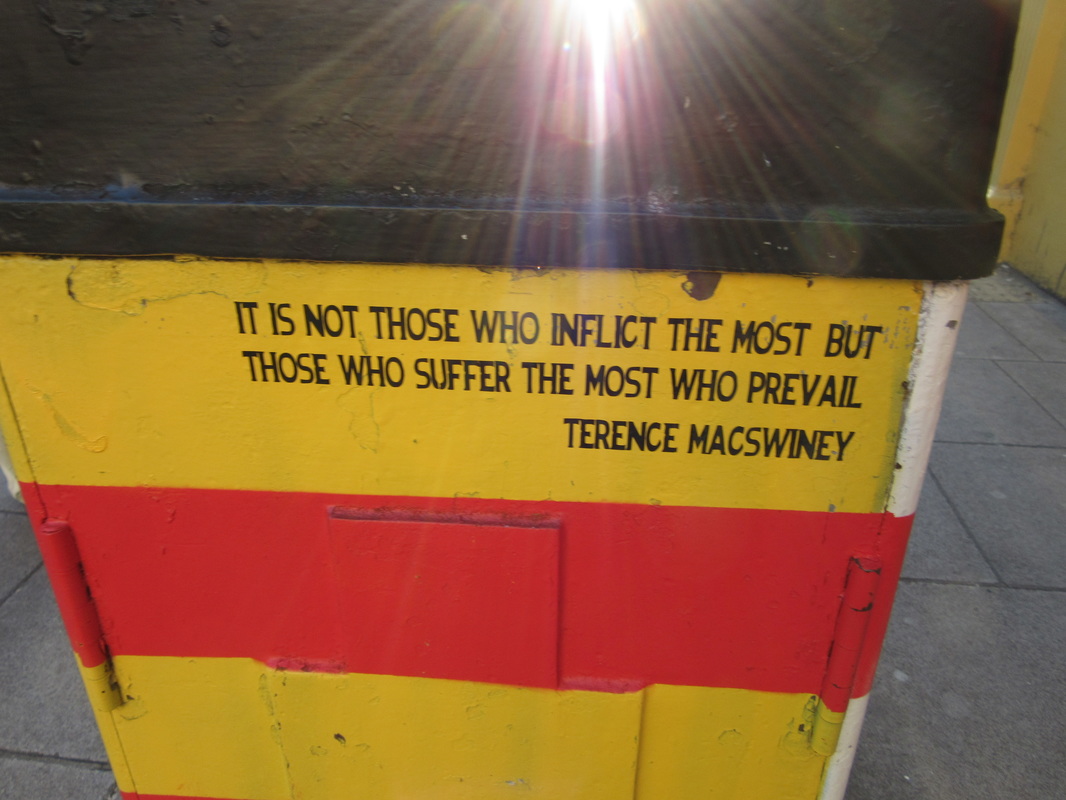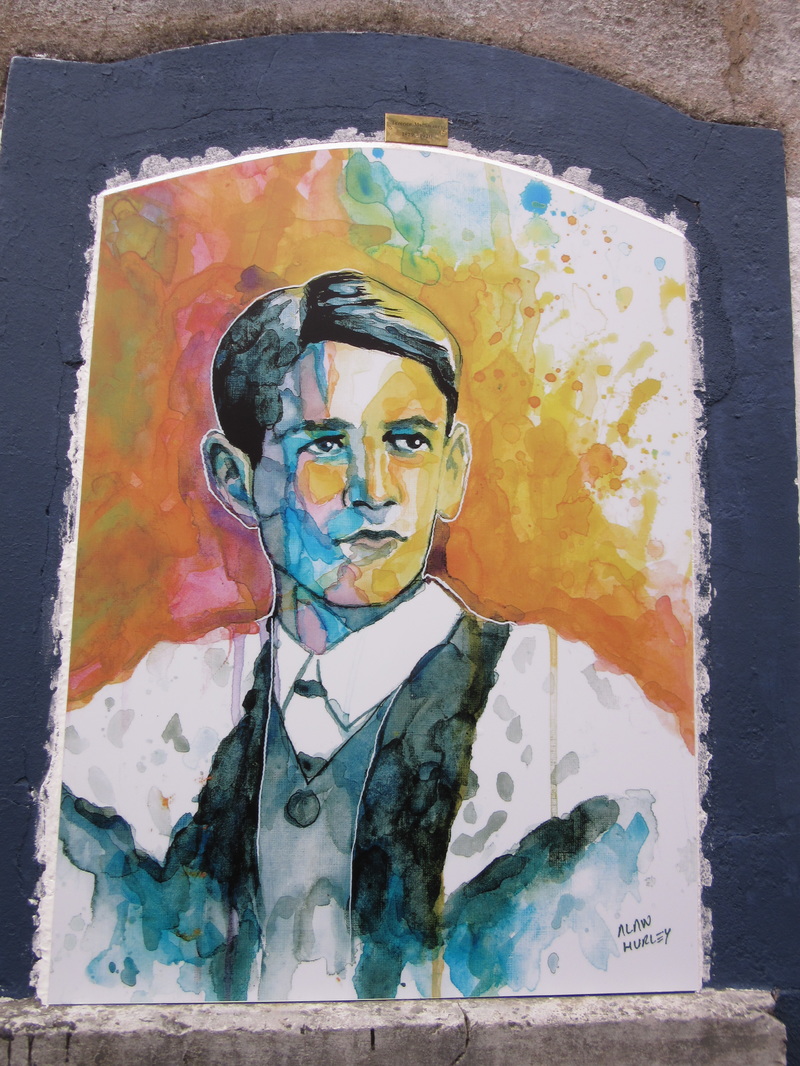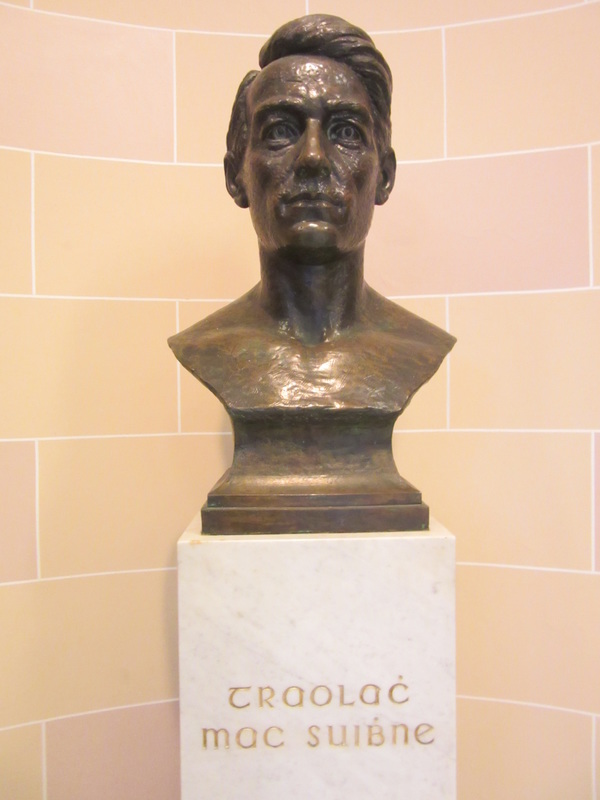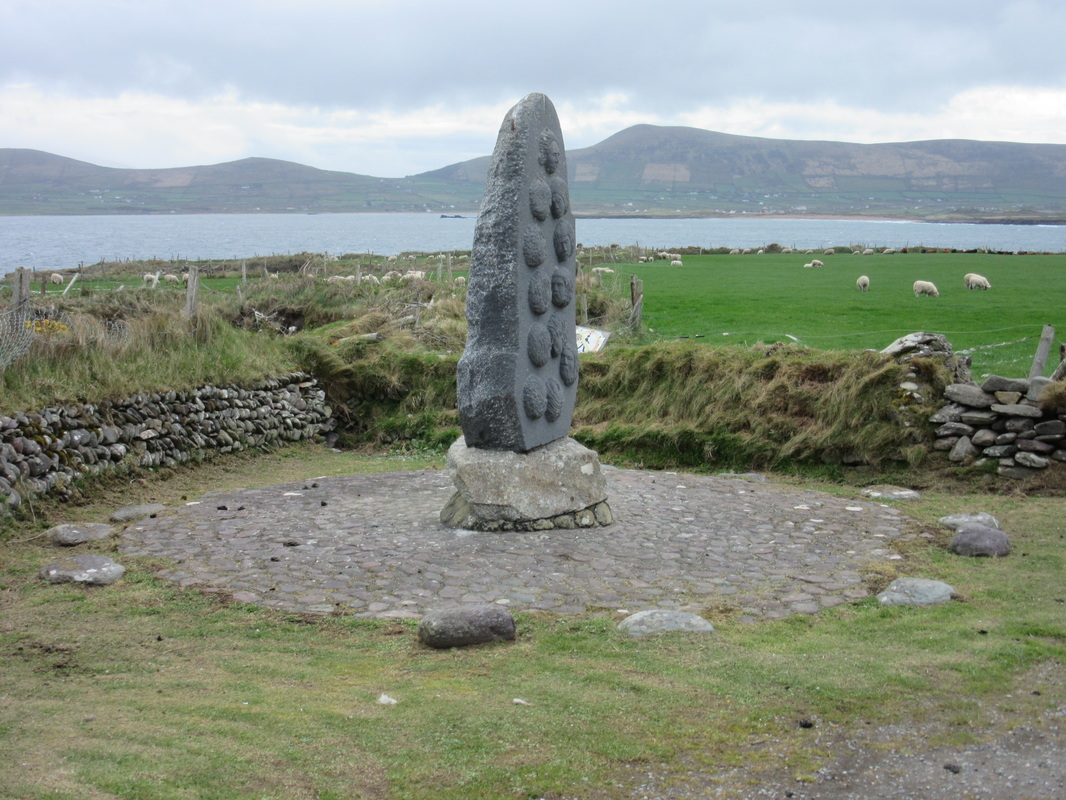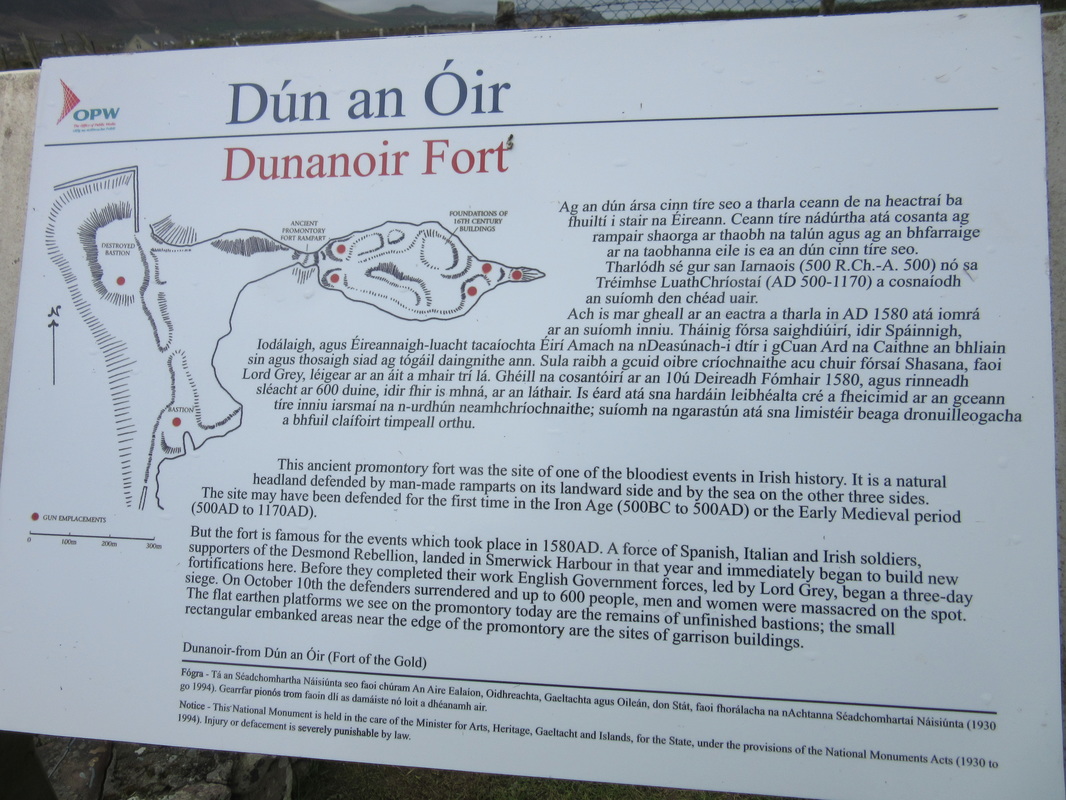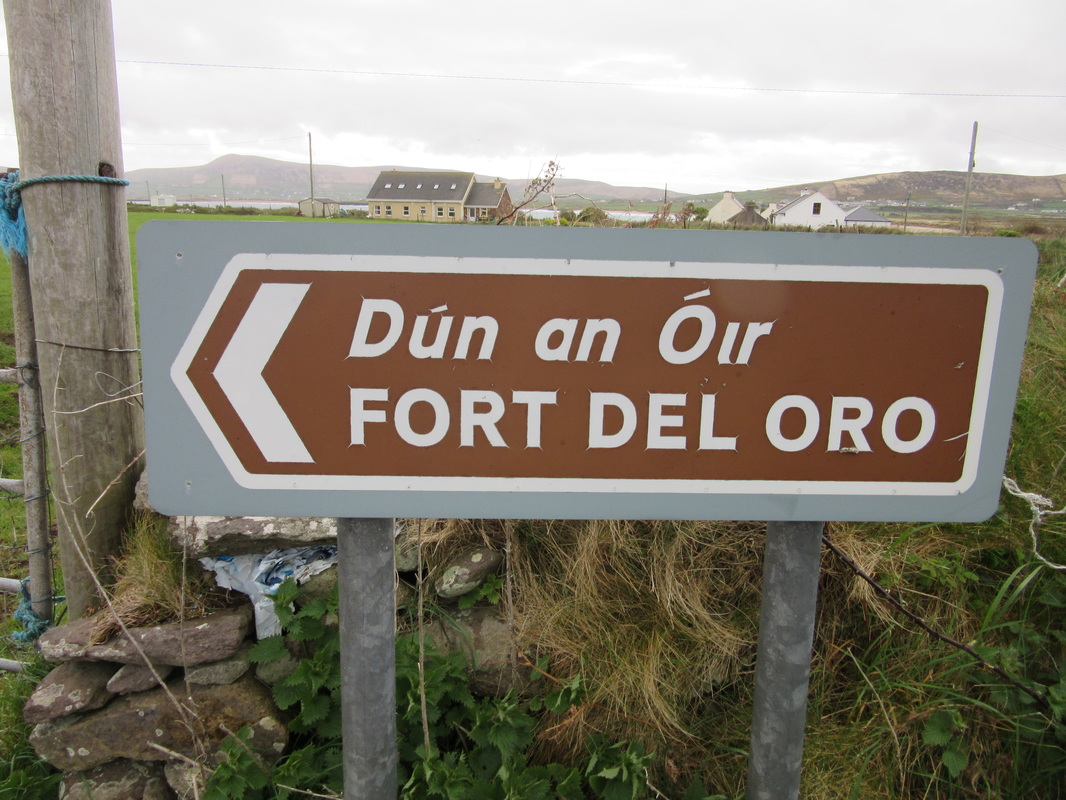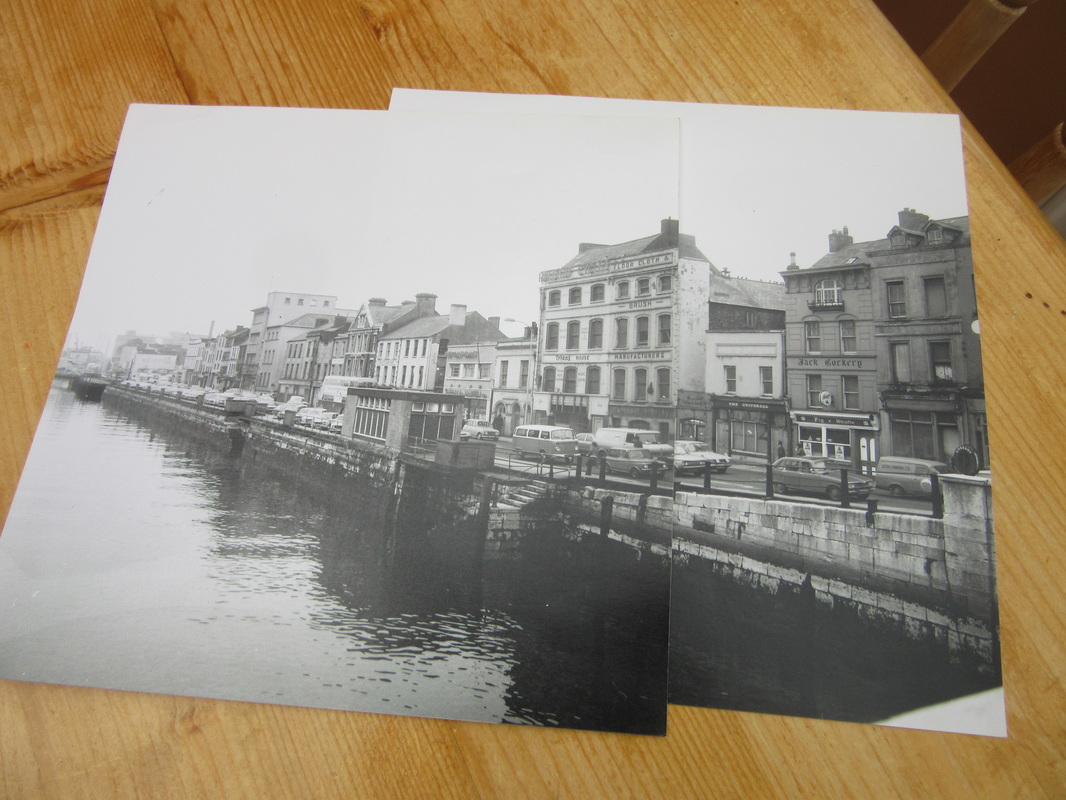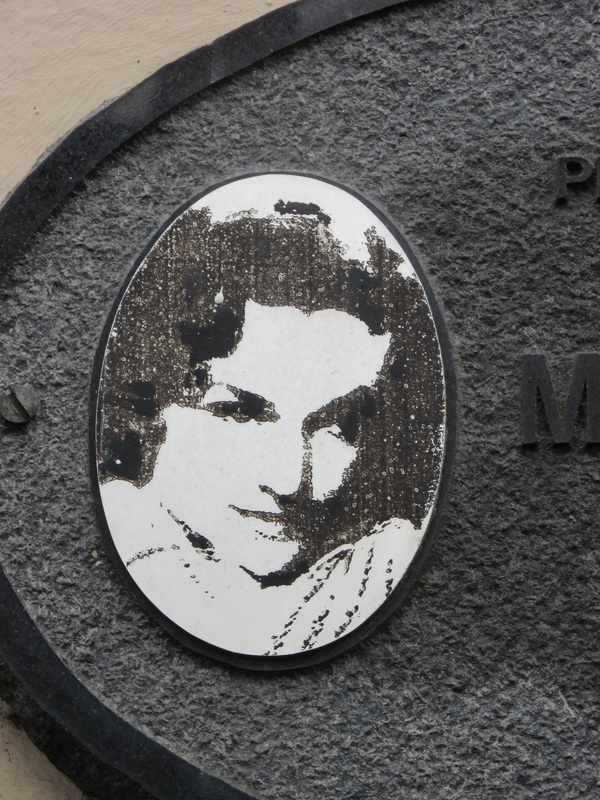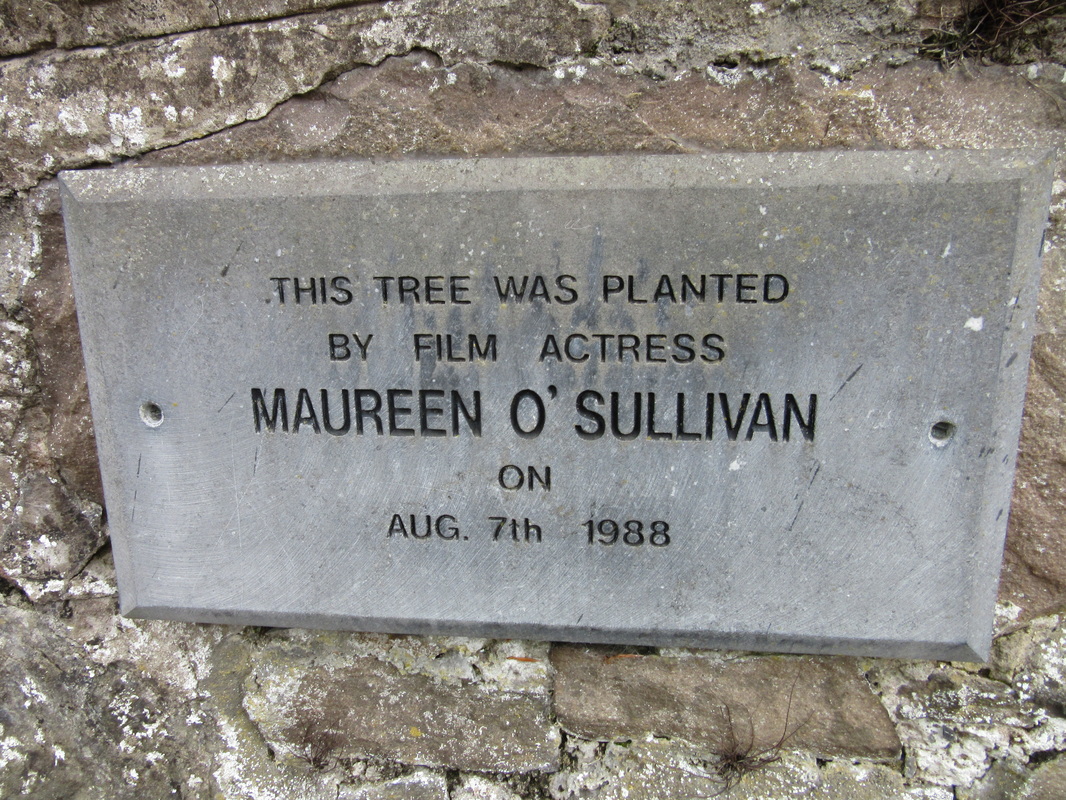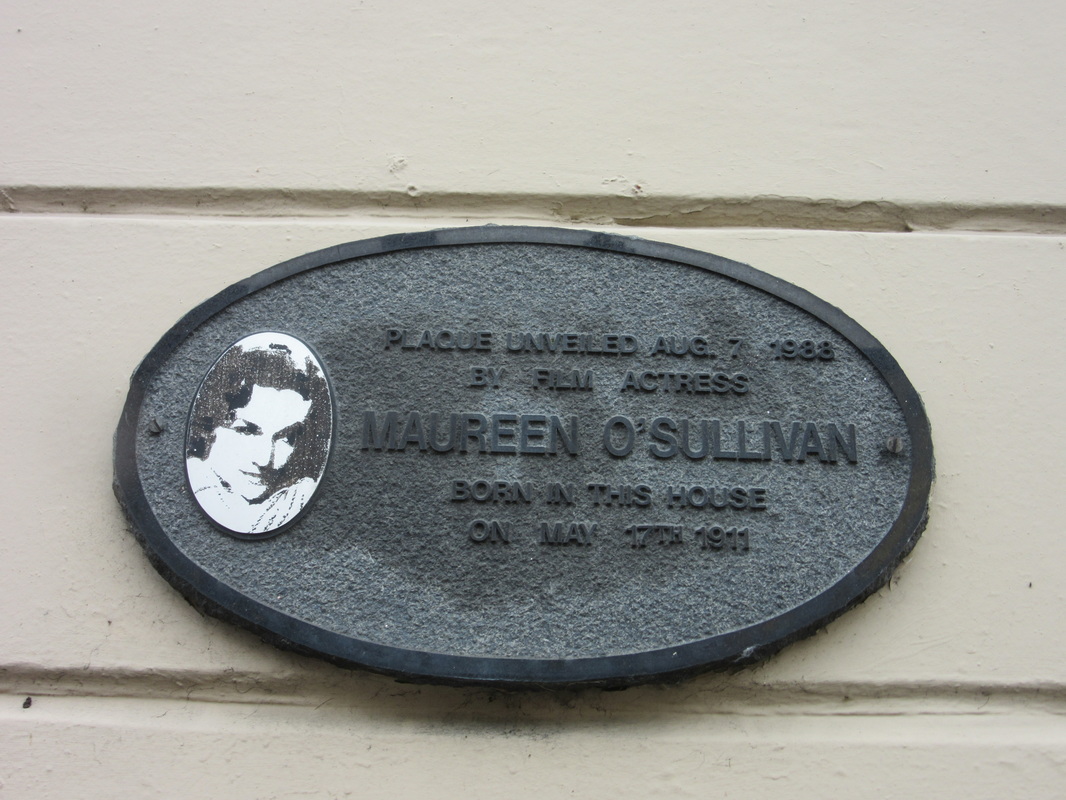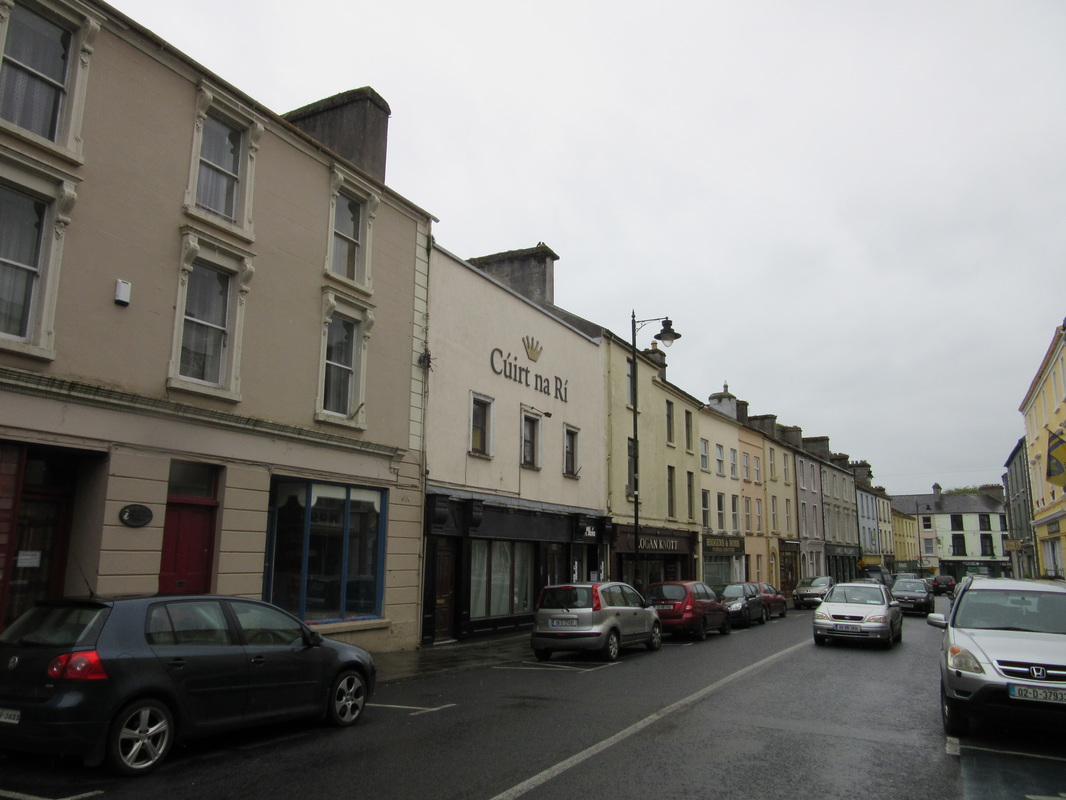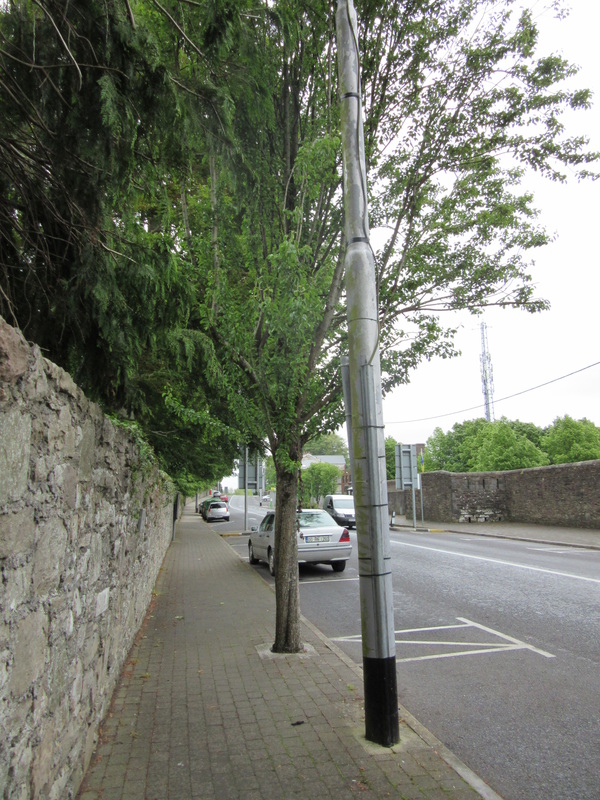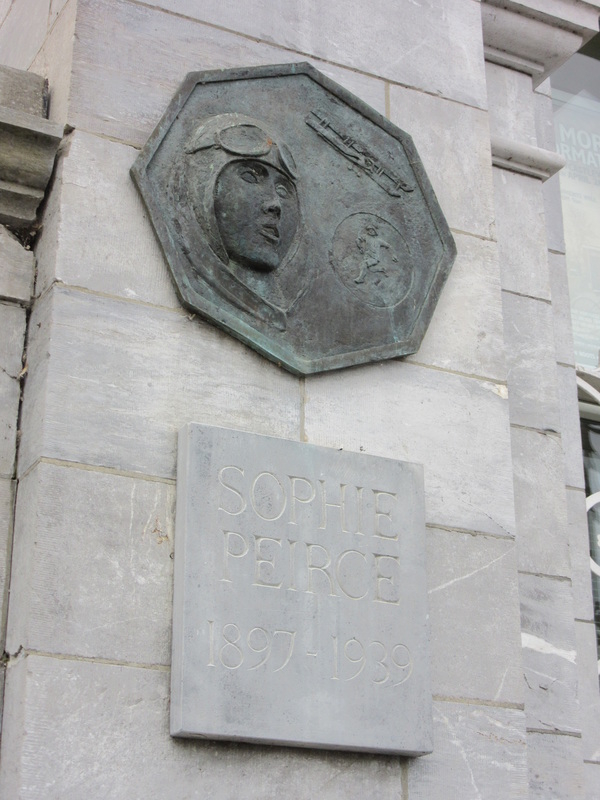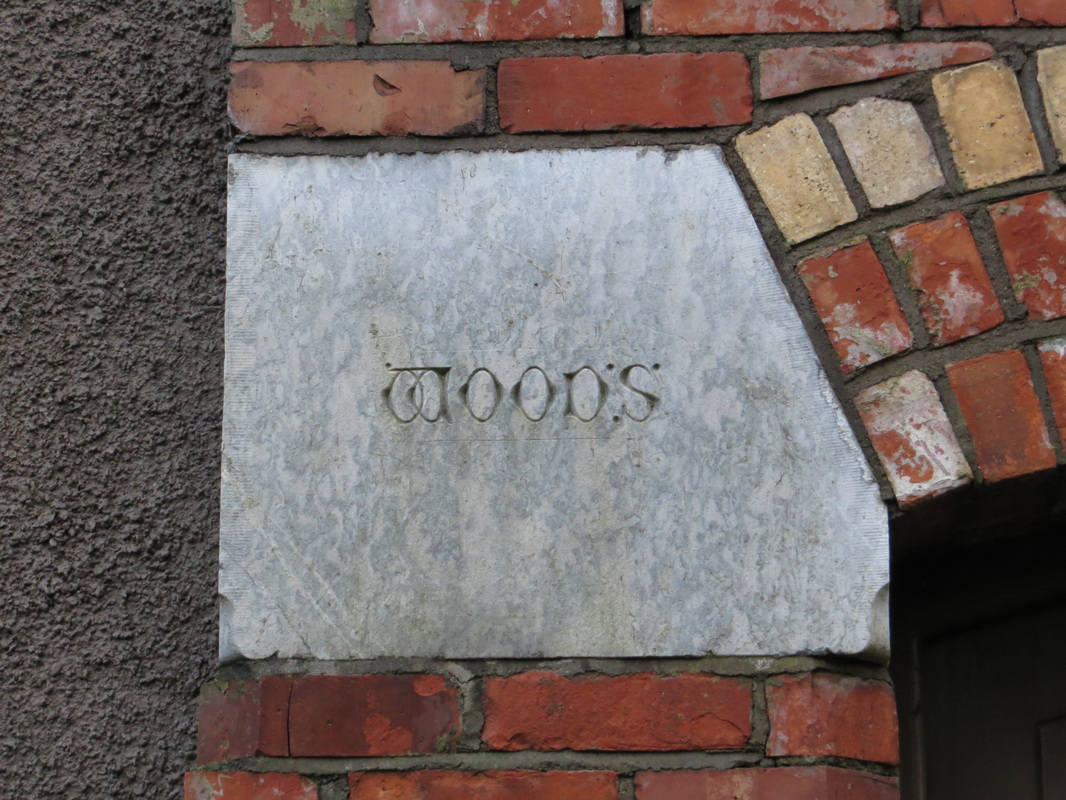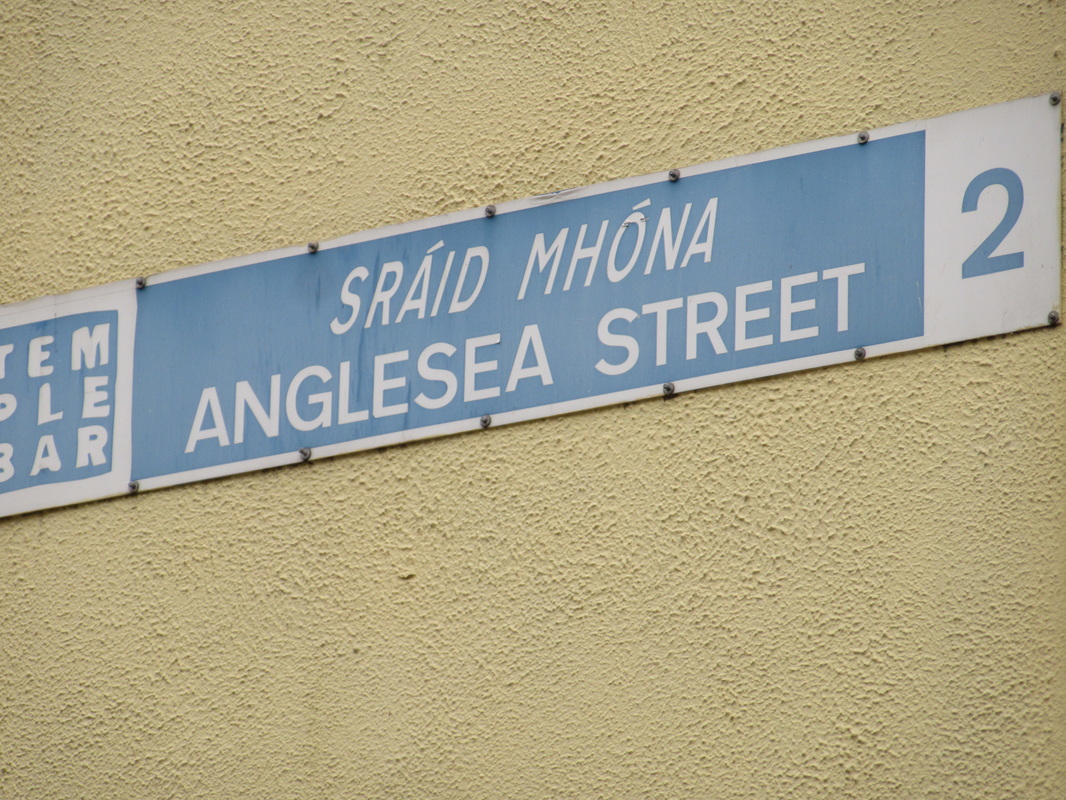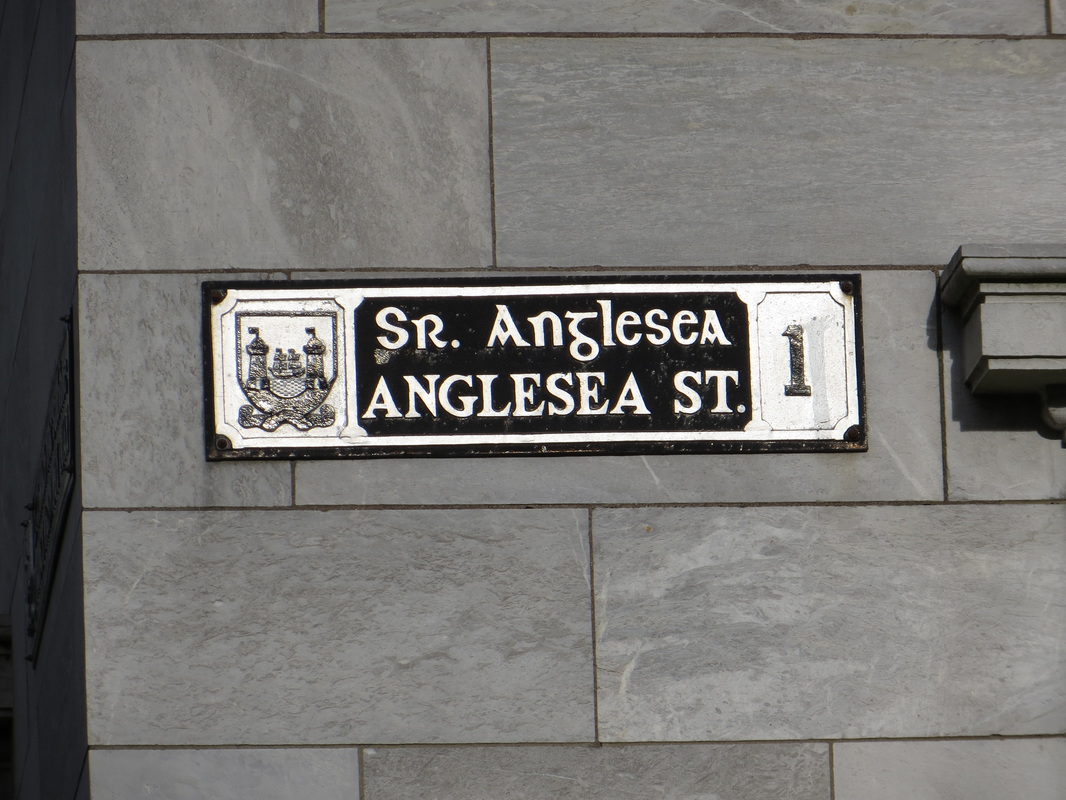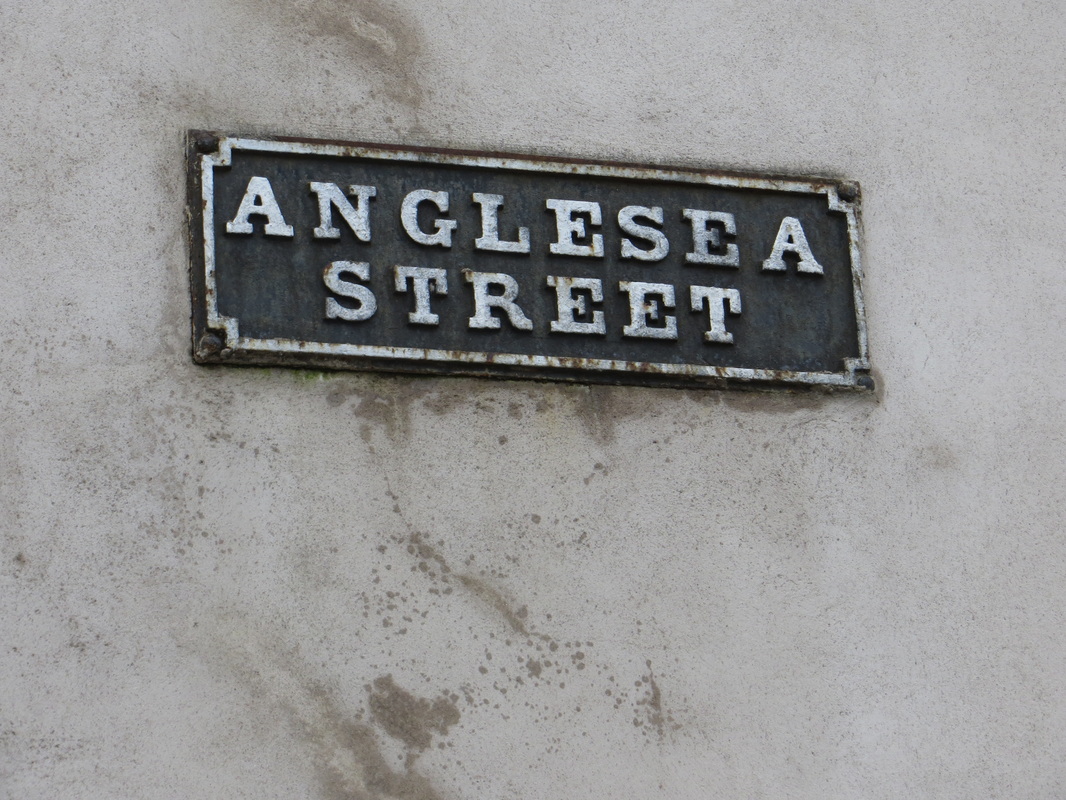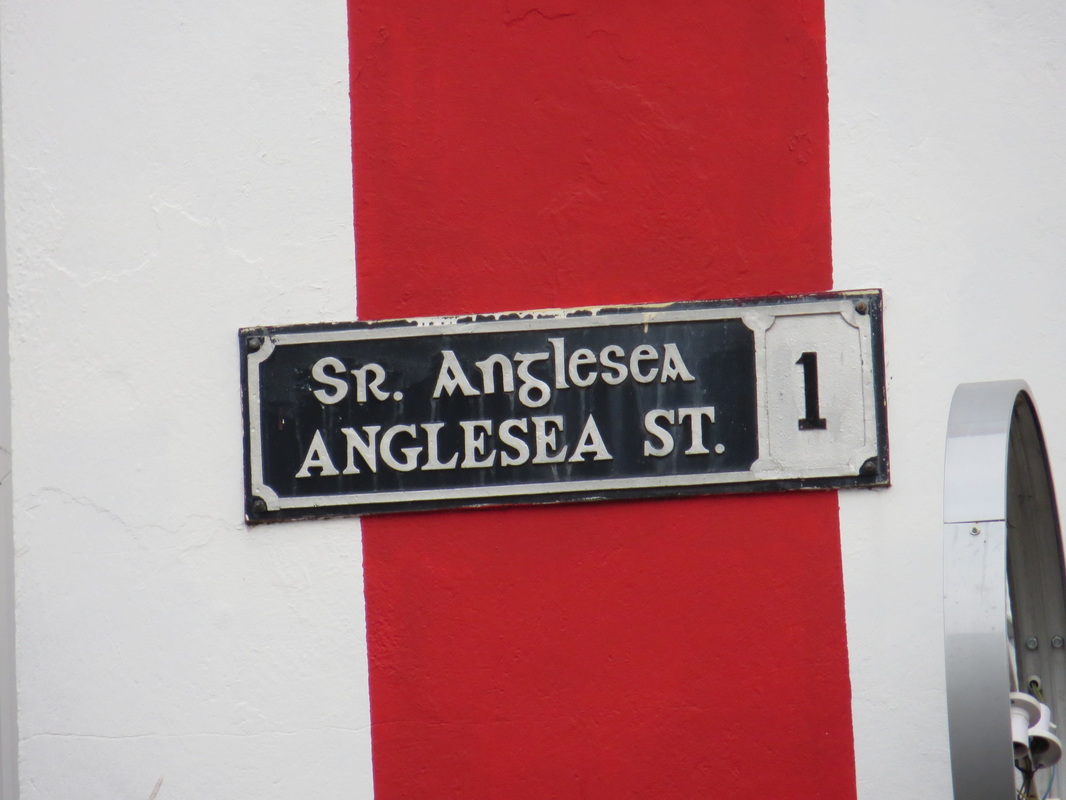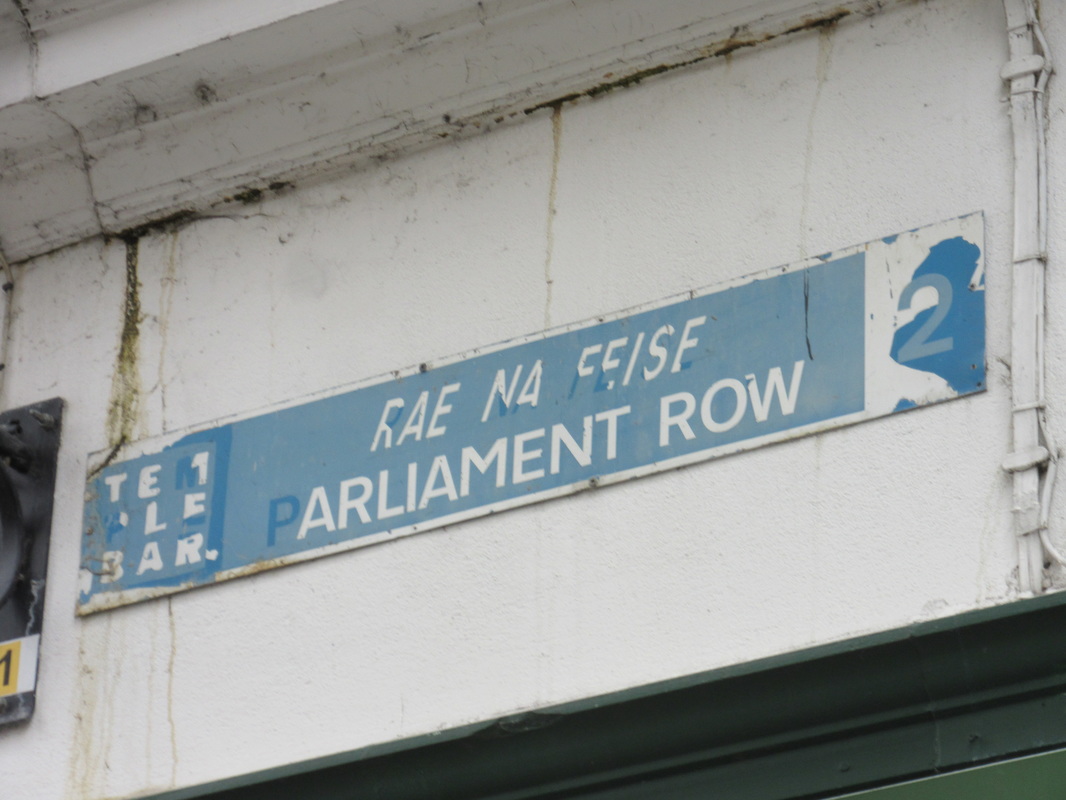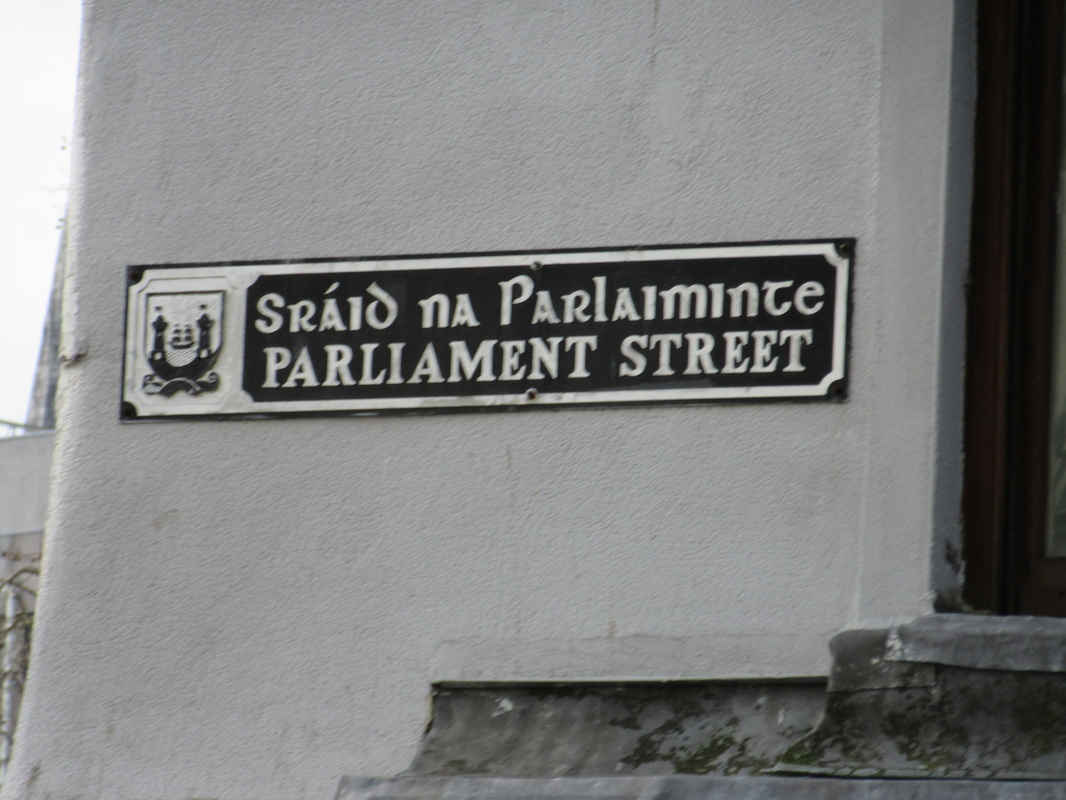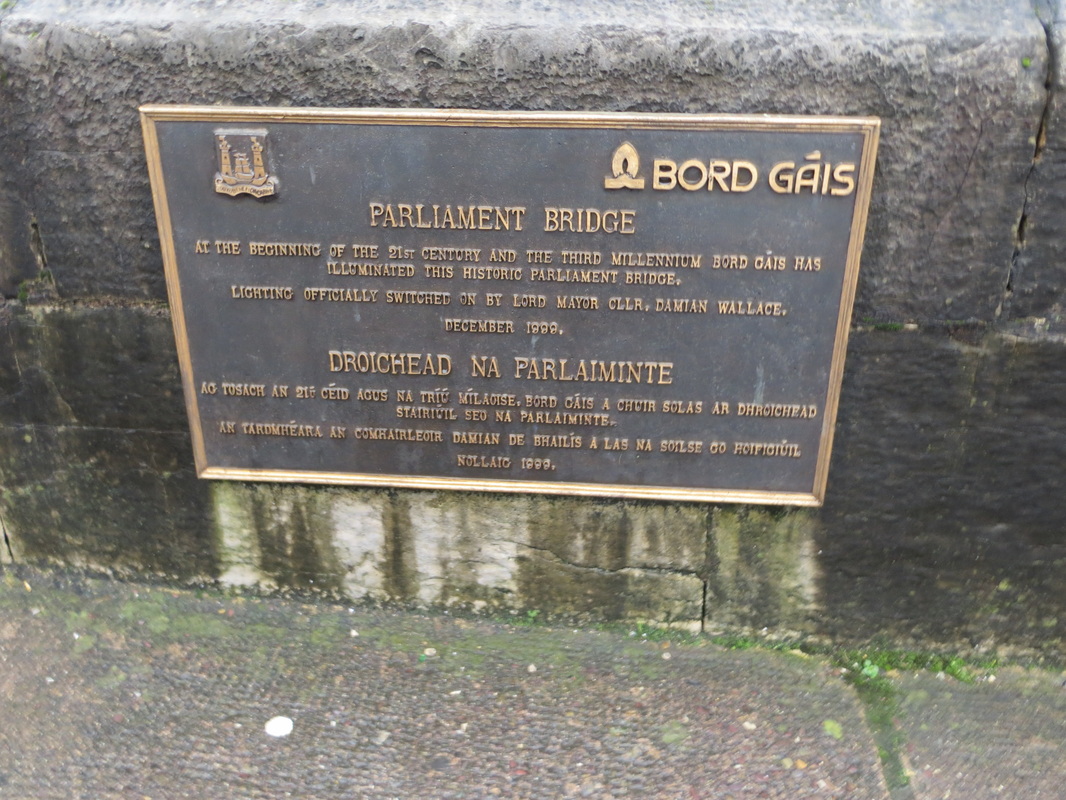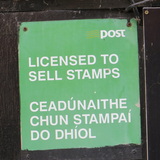| Yesterday I spotted that Siobhán Doyle was a guest on Donal Fallon’s podcast Three Castles Burning and it sent my memory recall in all different directions. On a nice May evening, in 2018, we stopped with friends at O’Connell’s bar in Skryne in Co. Meath. As I was on driving duty, I explored the nearby cemetery, as one does, and the surrounds with the younger generation. The numbering on the seating in an outside shed did have us puzzled for a while – this is the place where one remembers to turn the lights out, not on. Returning to the counter, the barman did confirm that these timber planks, with their numbers, did, as we guessed, come from Croke Park – the old one that was demolished. Christmas advertising is nearly a month old this year already but I do not think that I have yet seen this year the advert showing snow at a closed O’Connell’s. I have to travel to a meeting on Monday and the Three Castles Burning podcast will be my choice of listening. It will be a bit longer before I find out if the Smoking Room in Skryne made it into the Top 100 in Siobhán book – this being a Santa’s letter of sorts. | |
|
0 Comments
Yet again, a word in Irish brings joy.
I had never stopped to think that there might be a word for rustled cattle, stolen cows, plundered bovine. My geographical and timeline placings did not put me near cattle, or plundering forays. This morning, reading an email with latest blog post from West Cork History introduced me to Lisheenacreagh – Lisín na Creiche – Little Fort of the Cattle Spoil. The word ‘spoil’ had me intrigued. Logainm has the spelling as Lisheennacreagh and a suggested history of ‘little fort of the prey or plunders’. WestCorkHistory has details of house being burned down in War of Independence. ‘Creach’ has now entered my vocabulary of Irish words. I cannot see it getting an outing in a sentence too often. No photograph of a sign today – but will go looking on my next trip to West Cork if a townland plaque does exist for the safe house for the stolen cattle. Today’s listing from Stair na hÉireann advised that on this day in 1916, Séan Ó Ríordáin was born.
This prompted a reminder to self to finish the grouping of the very many photographs and start uploading here. I have spent a while this afternoon putting together the different aspects relating to Seán Ó Ríordáin that I have encountered in the past few years – as well as a bit of a distraction on YouTube. SEE ALL HERE A short while back, a blog post arrived in my inbox containing a lead photograph of the boat above and I immediately recognised it as being from a headstone at Kilmalkader in Corca Dhuibhne – the two blogs earlier this week, prompted a third. The carving is on a beautiful and unusual headstone at the bottom of the cemetery, looking out to sea. The wording engraved is a simple message that Dr. Paddy Moriarty, who ministered to the peninsula for 30 years, died on 31 May, 1944. My interpretation of the boat was escapism, Jonny Baker’s was returning to a safe harbour – there are probably many other interpretations. The engraving was memorable to more than us. And that was where the blog would have finished until I went searching for more information on Dr Moriarty and, unless there were two Dr. Paddy Moriarty’s on the Dingle peninsula in the 1940’s, the headstone story weaves through Patrick Kavanagh, Raglan Road, a Fianna Fáil minister, and on to Dido.
‘On Raglan Road of an autumn day I saw her first and knew Dido wrote Grafton Street in memory of her father, who was a nephew of Hilda Moriarty – O’Malley, the dark haired beauty that snared Patrick Kavanagh. The Irish Times said that as ‘a young girl, Dido was obsessed with great-aunt Hilda, the tales of her beauty and her role in Raglan Road’, and that she sung Raglan Road to her father as he was dying. Hilda Moriarty was a student at U.C.D when Patrick Kavanagh spotted her on Raglan Road – the poem, and song followed. In 1947, she married Donogh O’Malley who went on to be Minister for Education and introduced free post-primary education for all. In U.C.D., future President, Paddy Hillery, was a classmate. Richard Harris was a friend. It was Autumn 1944 when Patrick Kavanagh spotted Hilda Moriarty and was smitten. He followed her home to Dingle peninsula, uninvited, that Christmas. If there was indeed only one Dr Paddy Moriarty, that was the Christmas period that he died, aged 51. A lovely headstone now has a story attached to it in my head.
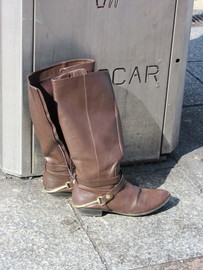 This was the image that awaited us as we came up Patrick’s St towards the Winthrop St junction at lunchtime on Monday. The probable, and most boring, explanation is that just having purchased new footwear, a decision was made to ditch the old, rather than bring home. But such an explanation would not provide distraction time, time to allow the mind to wander, to escape for some chill-out time. Maybe enough was enough, and walking barefoot was the first step in rebelling against the norms and expectation of society – that quote eventually wore down the mental block providing resistance, the time had arrived when the life would be lived, not chosen. Maybe, a dare or a bet to act out the Mikel Murfi role had become less fun as sobriety returned in the early hours. Maybe some escapade the night before resulted in lost or damaged shoes. These boots borrowed, (or retrieved from a recycle bin), until the shoe shop was reached. This morning’s tweet from the Irish Aesthete demanded that the rambles through my mind become fully formed in the shape of this blog post. Ninety six years ago, Terence MacSwiney died after 74 days on hunger strike.
I spotted quite a few tweets and blogs to record this anniversary this morning. Reason enough to update the blog page with images of the Seamus Murphy bust of the former Lord Mayor of Cork, and some artwork that I have seen in the recent past. Looking at it all together, there is a lot out there to prompt one to remember Tenerce MacSwiney
This morning’s update from Stair na hÉireann advised that on this day in 1975, Seamus Murphy died.
His work has prompted quite a number of blogs here before. I have yet to upload and create a separate section of the work that I have photographed on my travels. For now and for today, a slideshow of a selection of his work. 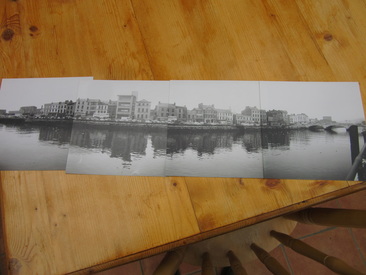 A while back, Donncha on Old of Cork Photos uploaded a series of images of Cork in 1987. The one that struck me was where the construction of the Multi-Storey Car Park at Marchants’ Quay was in progress – the shopping centre façade had not yet commenced. I remember in 1986 working for a summer in a building with a window looking onto the construction site and spending quite some time watching the works. I was particularly impressed with one of the two tower cranes on site – it was on railway-type tracks and was able to move up and down the quay to the appropriate location as required. Merchants’ Quay was regularly on my route home. Prior to the DeValera and Collins Bridges, St Patrick’s Bridge was the first available bridge to the north. Many times I passed the Shopping Centre and I do not think that I ever liked it. Previously I blogged about the streetscape photograph, predating the shopping centre, which hangs in Dan Lowry’s. A few months back at the Special Irish Interest window sale held annually at the Irish Cancer Society shop, I managed to spot these images of Merchants’ Quay before the shopping centre when obviously some buildings were let to deteriorate in advance of the overall redevelopment – still happening today. We have had the magnifying glass out and have managed to decipher some of the stores and branding including – Jack Corkery’s Pig & Whistle; The Universal; Mulcahy Hairdressers – there was a recollection of there being a barber there but the use of 'hairdresser 'explained the lack of blood and bandage pole. I learned that a ‘Kelvinator’ was a brand of fridge. Could you imagine a city centre premises for Floor Cloth & Brush Manufacturers? St Vincent’s Hostel was an imposing block. Only 39p for King Size cigarettes. The vans with ESB and Astra Pumps branding. I need to do more digging as to the two buildings at the Parnell Place end. It looks like QU_ _ _ HOTEL on the corner. We guessed DRYDOCK BAR but are unsure. If you really want to see what passed for architectural merit in the 1980’s, streetview will oblige. Me – I’ve seen it more than enough already. I have spotted many plaques to General Tom Barry – where he lived, where he fought, and where he is buried.
One common denominator is that they are all in County Cork. Last weekend, the daily updates from Stair na hÉireann listed the anniversary of the death of Tom Barry (2nd July,1980 ) and also his birth (1st July, 1897). What I hadn’t realised was that the birth was in Co. Kerry. The 1901 census confirms that Thomas B. Barry, then 3 years old, was resident at house 35 in Langford in Killorglin, Co. Kerry. His mother is listed as head of house. His father is not mentioned on that form so I assumed that he may be at the R.I.C. barracks, where he then worked – retiring a few while later and returning with family to West Cork. But the only other Thomas listed for Killorglin that night was not his father –so maybe he did manage to opt out for a while. Or maybe I need to search further. Reverting to Google streetview, it appears that, unlike so many places in Co Kerry, Killorglin has not erected a plaque to record the residency of the young Tom Barry.I hope to visit in the coming weeks and visit to confirm. That is not to say that Kerry is short of republican memorial plaques
I cycled past this house last night. This morning the name appeared on my computer screen. More than enough reason for a blog – even just to add to what was mentioned before.
I was reading today’s update from Stair na hÉireann as to what happened on this day in history and they mentioned that Katherine Cecil Thurston (née Madden) was born in Cork on this day, in 1875. This name was new to me and I wondered as to whether there was a plaque to her somewhere. My web searching treated me like a nail, hitting me straight with the comment that ‘often forgotten today, was a highly popular and successful writer of short stories and novels at the beginning of the twentieth century’. She ‘had two books simultaneously on the New York Times best seller list in 1905, the first time any author had achieved such a feat’. It revealed that she was born at Woods Gift in 1875. She died of asphyxia in her hotel room at 13 Morrisons Island, also in Cork city, in 1911, one month before she was due to remarry. I suspect that I will be requesting a book from the City Library – to find out more. Even a walk through St Joseph’s Cemetery might be prompted. Another Temple Bar streetsign that did puzzle me at the time and it has taken a little while to try to reason why. I have learnt more since last week but am unsure if I have fully grasped why the translation is ‘Mhóna’.
Last Thursday, my immediate thoughts were that ‘Móna’ translated as ‘of the bog/peat’ and that Anglesea Street in Cork did not change when translated. Last night, I read that Mourneabbey translated as Mainistir na Móna (Monastery of the bogland) – but it was ‘Móna’, not 'Mhóna'. Logainm has many listings for Anglesea – Road, Avenue, and Place among others - and it lists all in the English form. Anglesea is not translated. Last week, Vox put me onto Sráidainmneacha Bhaile Átha Cliath which advised that Anglesey, the ‘correct’ spelling of Anglesea translates as ‘Inis Món’, confirmed by tearma.ie. So it appears that there is no bog in Temple Bar, just that Inis (the island) has been dropped from the translation of Anglesey/Anglesea, Inis Món. On Thursday, I was in Dublin and spotted this streetsign off Fleet Street.
I mentally filed this away as something needing further investigation as my recollection of Parliament Street in Cork was a similar word to Parliament. Tearma.ie confirmed Feis is a festival or feast - as in Feis Cheoil or Ard-Fheis. Yesterday, Logainm.ie’s update was on Parliament Street in Waterford – the Irish translation for this and the three other Parliament Streets throughout the country is Sráid na Parlaiminte. ComeHereToMe advises that Parliament Row was called Turnstile Alley upto 1775. Maybe the turnstiles were an entrance to a feast or a festival. Or maybe, those in Temple Bar equate those in parliament to feasting for themselves. I suspect that there is a better explanation – but that remains on the ‘To Find Out More’ list. |
AuthorFrom Cork. SUBSCRIBE
Unless otherwise specifically stated, all photographs and text are the property of www.readingthesigns.weebly.com - such work is licenced under a Creative Commons Attribution - ShareAlike 4.0 International Licence
Archives
May 2024
Categories
All
Blogs I Read & LinksThought & Comment
Head Rambles For the Fainthearted Bock The Robber Póló Rogha Gabriel Patrick Comerford Sentence First Felicity Hayes-McCoy 140 characters is usually enough Johnny Fallon Sunny Spells That’s How The Light Gets In See That Tea and a Peach Buildings & Things Past Built Dublin Come Here To Me Holy Well vox hiberionacum Pilgrimage in Medieval Ireland Liminal Entwinings 53degrees Ciara Meehan The Irish Aesthete Líníocht Ireland in History Day By Day Archiseek Buildings of Ireland Irish War Memorials ReYndr Abandoned Ireland The Standing Stone Time Travel Ireland Stair na hÉireann Myles Dungan Archaeouplands Wide & Convenient Streets The Irish Story Enda O’Flaherty Cork Archive Magazine Our City, Our Town West Cork History Cork’s War of Independence Cork Historical Records Rebel Cork’s Fighting Story 40 Shades of Life in Cork Roaringwater Journal |
